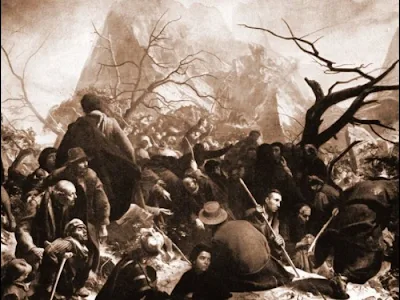When I was studying in Florence a few years ago I became aware of the work of the Italian painter Pietro Annigoni. His St Joseph the Worker was hanging in a Florentine church alongside the Old Masters and it didn’t seem out of place there to me. Here is a style that is definitely modern, especially with his use of bright colour, yet it conforms (for the most part) to the traditional forms of Western naturalistic sacred art. His portraits are truly great I think -- there is a famous one of Queen Elizabeth II (…of England – I probably need to say that?) At times, he does tend to stray into a Salvador Dali-esque surrealism which I don’t like. The Anchorites in the Desert, for example, looks as though it ought to have a drooping clock in there somewhere.
What is interesting about these works of sacred art is how he balances the representation of the general and the particular. Shawn Tribe and I wrote recently about how we feel that most current artists who paint sacred art in a naturalistic style tend to focus too much on the characteristics of the individual. The result is that rather than looking like a saint, it looks like a portrait of the girl or boy nextdoor. Annigoni, seems to get around this by making the features of the face less prominent, very often by putting it in shadow. This emphasises the idealised person more. Notice also how he skillfully varies the focus and colour intensity in the baroque manner (although the variation in focus is absent in the Achorites painting, it's all sharp edged. Perhaps that is why I don't like it.)


























